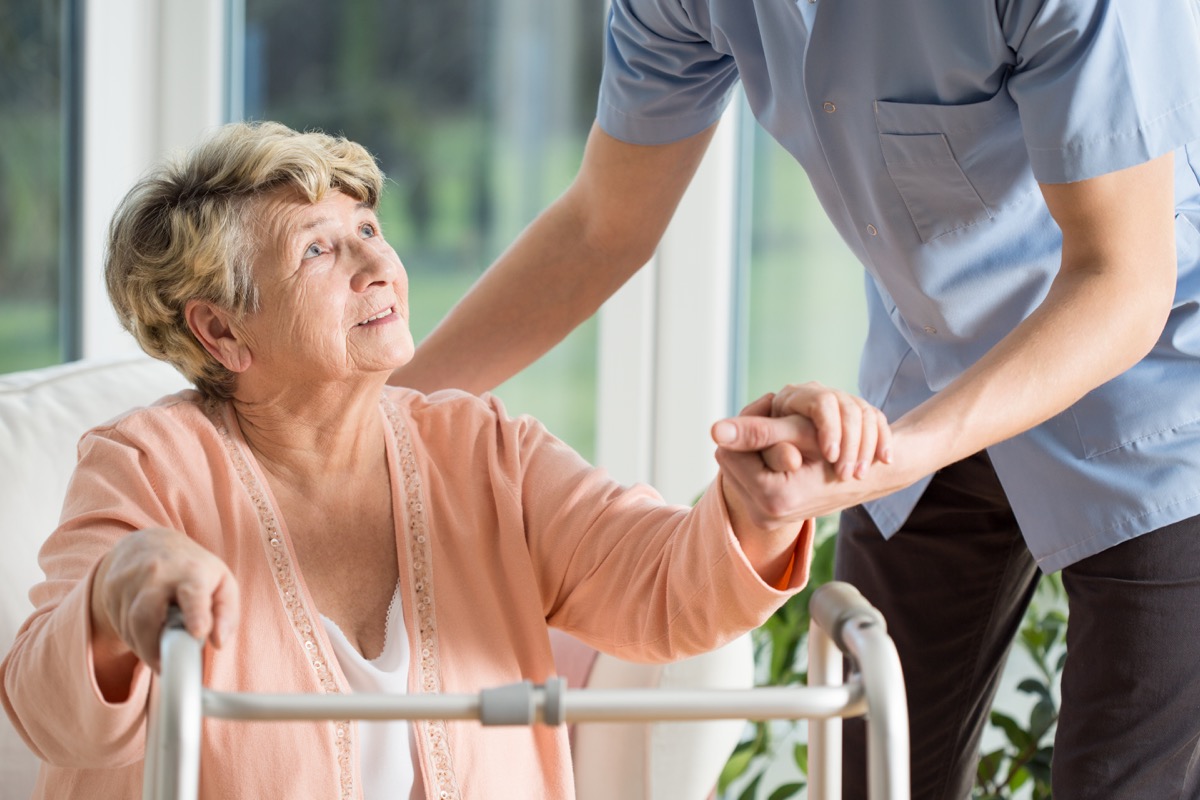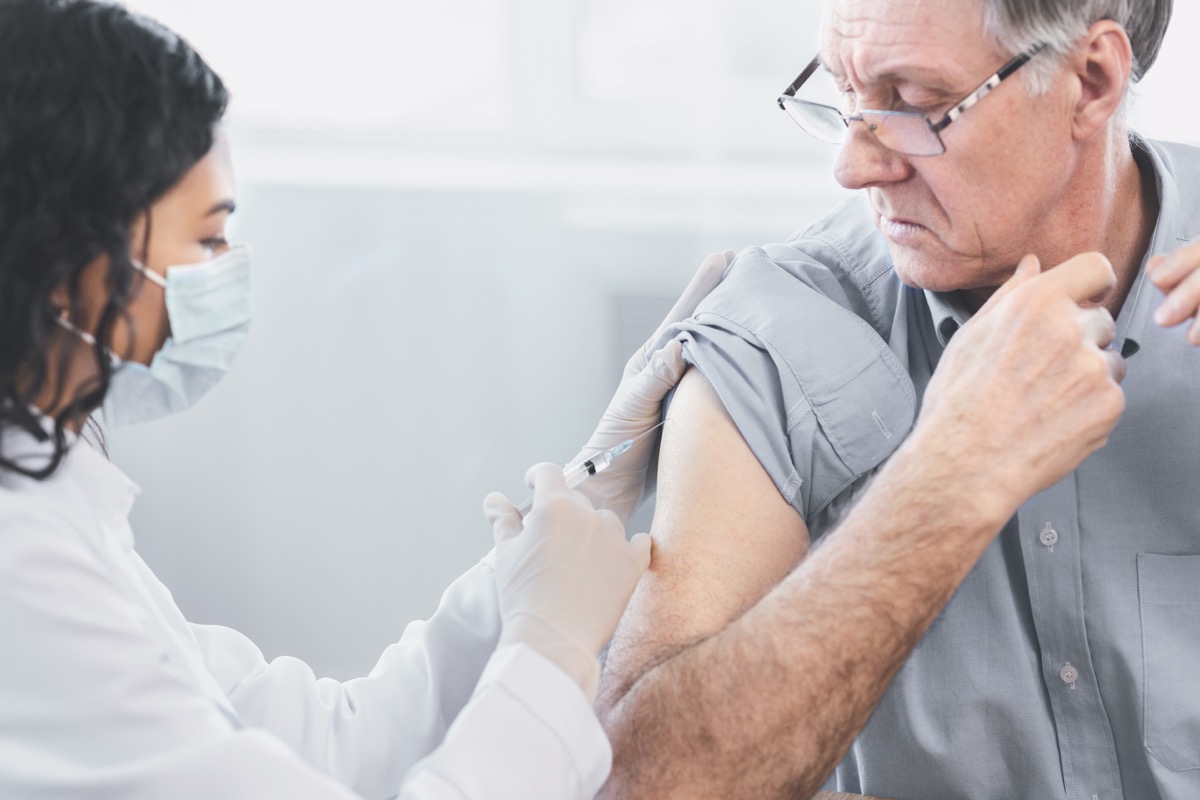After presenting criteria and allowing for questions and debate, the ACIP voted 13 to 1 to confirm their recommendations on Phase 1a of the vaccination rollout, i.e. the first groups to be offered the COVID vaccine. Next, CDC director Robert R. Redfield, MD, will make the final decision after reviewing the committee’s recommendations, likely by Dec. 2, according to The New York Times. But regardless of Redfield’s call, states are not legally required to adhere to the CDC’s suggestions, though they usually do, The Times reports. The final decision will be made on a state level by governors who have consulted with their top health officials.ae0fcc31ae342fd3a1346ebb1f342fcb If your state does follow the CDC’s COVID vaccine recommendations, read on to see who will be getting the first doses. And for more on how to keep yourself safe, consider How Likely You Are to Catch COVID in the Next Month, Expert Says. Read the original article on Best Life. Suggested vaccine schedule: Phase 1a As those who are on the frontlines caring for patients infected with COVID, health care personnel have long been considered to be a likely choice as candidates for the earliest first round of vaccines, which the ACIP confirmed in their recommendation. As of Dec. 1, the CDC reports that there have been 244,945 cases among health care personnel and 858 deaths. In voting during the emergency meeting, the CDC defined health care personnel as “paid and unpaid persons serving in health care settings who have the potential for direct or indirect exposure to patients or infectious materials.” And for more on what we need to achieve herd immunity, check out Dr. Fauci Says This Many People Need to Get Vaccinated to Stop COVID. Suggested vaccine schedule: Phase 1a Nursing homes and long-term care facilities have seen a disproportionately high number of COVID-19 deaths over the course of the pandemic due to their vulnerable populations. As of Nov. 27, The New York Times reports that these facilities have seen more than 101,000 COVID-related fatalities, which constitutes 39 percent of all deaths in the U.S. That’s why the ACIP ruled these groups are a top priority. The CDC clarified that “long-term care facility residents are defined as adults who reside in facilities that provide a variety of services, including medical and personal care, to persons who are unable to live independently.” During the emergency meeting, the CDC also said that any personnel at these facilities would be considered as health care professionals and would be among those offered the first doses doled out during Phase 1a of vaccination. And for more on the vaccine process, check out If You’re This Age, You May Be Last to Get the COVID Vaccine, Fauci Says. Proposed vaccine schedule: Phase 1b While the motion wasn’t officially voted on during the ACIP’s emergency meeting, essential workers were listed as likely candidates to receive vaccinations during the secondary rollout of the first phase of vaccinations. According to the CDC’s early recommendations, published in the Morbidity and Mortality Weekly Report (MMWR) on Nov. 27, this includes many of the professionals whose ability to “remain healthy helps protect the health of others and/or minimiz[es] disruption to society and the economy.” The definition of an “essential worker” currently differs from state to state, but a division of the Department of Homeland Security has listed professions such as firefighters, police officers, emergency responders, teachers, grocery store employees, correction officers, transportation workers, and those whose jobs can’t easily be worked from home. In total, this makes up more than 87 million people, according to the MMWR report. And for more on how dangerous this common place is, read up on why Chances Are High Your Grocery Store Clerk Has Silent COVID, Study Says. Proposed vaccine schedule: Phase 1c The third pool of the first phase of vaccination was also not voted on or officially determined at the Dec. 1 meeting, but the CDC has long hinted that it will likely be adults who are most vulnerable to COVID. Patients with high-risk comorbidities such as diabetes, heart disease, obesity, immunocompromising conditions, or kidney disease would fall under the group, likely to be viable for vaccination during Phase 1c. However, states will still have the final say on which patients qualify for early access to inoculation. And for more on what getting your jab might be like, check out Dr. Fauci Says You Should Expect These COVID Vaccine Side Effects. Proposed vaccine schedule: Phase 1c Older patients represent one of the highest risk groups for dangerous cases of COVID-19, with the risk of severe illness rising exponentially from those who are 50 to those who are over 60. But while this has yet to be voted on by the ACIP or officially recommended by the CDC, some experts believe that states will choose to diverge from the health agency’s suggestion and potentially raise the minimum age to 75 to allow for the vaccination of other essential workers, The Times reports. And for more on how your age plays a role with the virus, check out COVID Is 14 Times Deadlier If You’re Over This Age, Research Shows.




